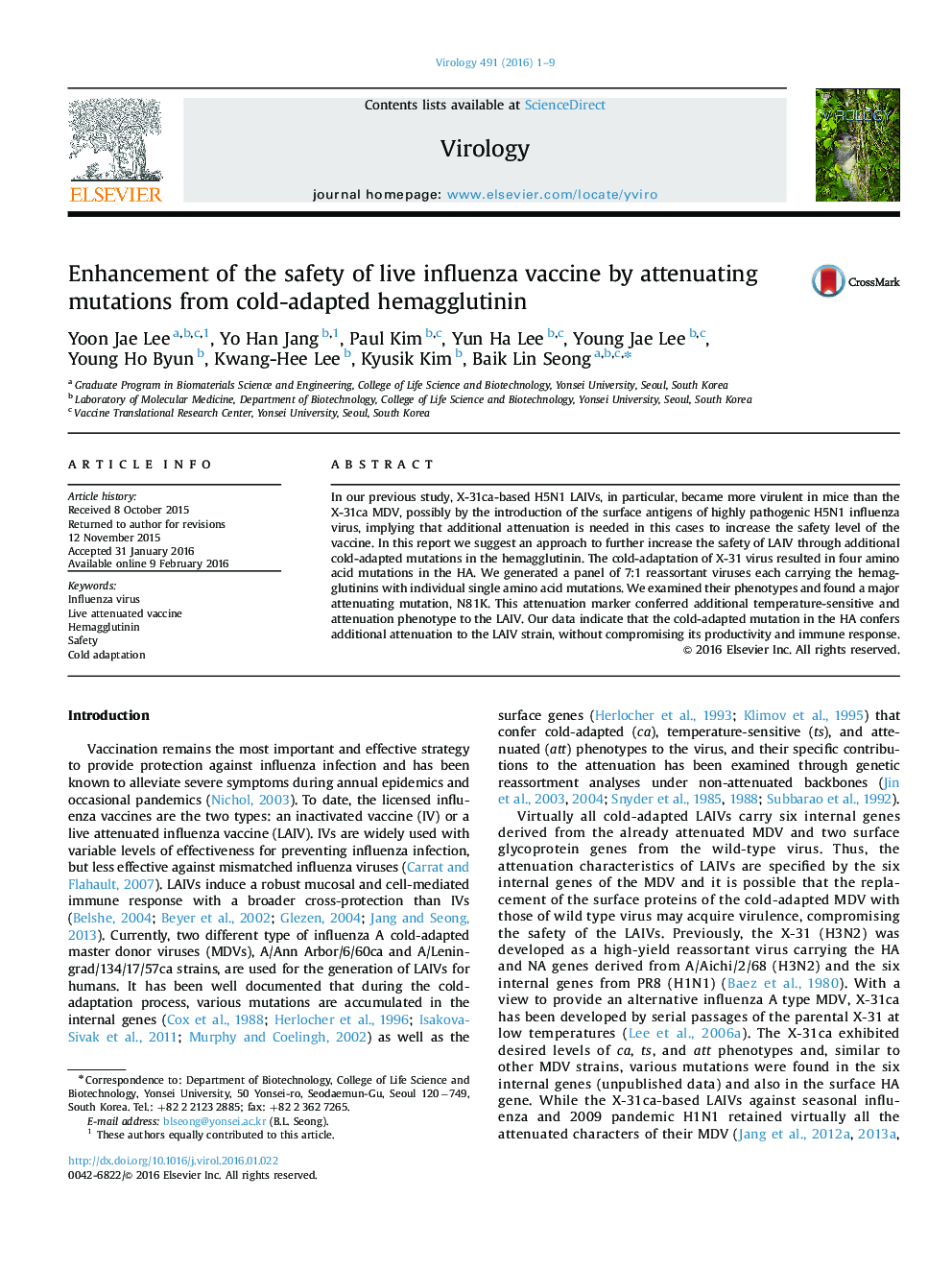| Article ID | Journal | Published Year | Pages | File Type |
|---|---|---|---|---|
| 3424018 | Virology | 2016 | 9 Pages |
•Cold-adaptation process induced four amino acid mutations in the HA of X-31 virus.•The four mutations in the HA also contributed to attenuation of the X-31ca virus•N81K mutation was the most significant marker for the attenuation of X-31ca virus.•Introduction of N81K mutation into H3N2 LAIV further attenuated the vaccine.•This approach provides a useful guideline for enhancing the safety of the LAIVs.
In our previous study, X-31ca-based H5N1 LAIVs, in particular, became more virulent in mice than the X-31ca MDV, possibly by the introduction of the surface antigens of highly pathogenic H5N1 influenza virus, implying that additional attenuation is needed in this cases to increase the safety level of the vaccine. In this report we suggest an approach to further increase the safety of LAIV through additional cold-adapted mutations in the hemagglutinin. The cold-adaptation of X-31 virus resulted in four amino acid mutations in the HA. We generated a panel of 7:1 reassortant viruses each carrying the hemagglutinins with individual single amino acid mutations. We examined their phenotypes and found a major attenuating mutation, N81K. This attenuation marker conferred additional temperature-sensitive and attenuation phenotype to the LAIV. Our data indicate that the cold-adapted mutation in the HA confers additional attenuation to the LAIV strain, without compromising its productivity and immune response.
